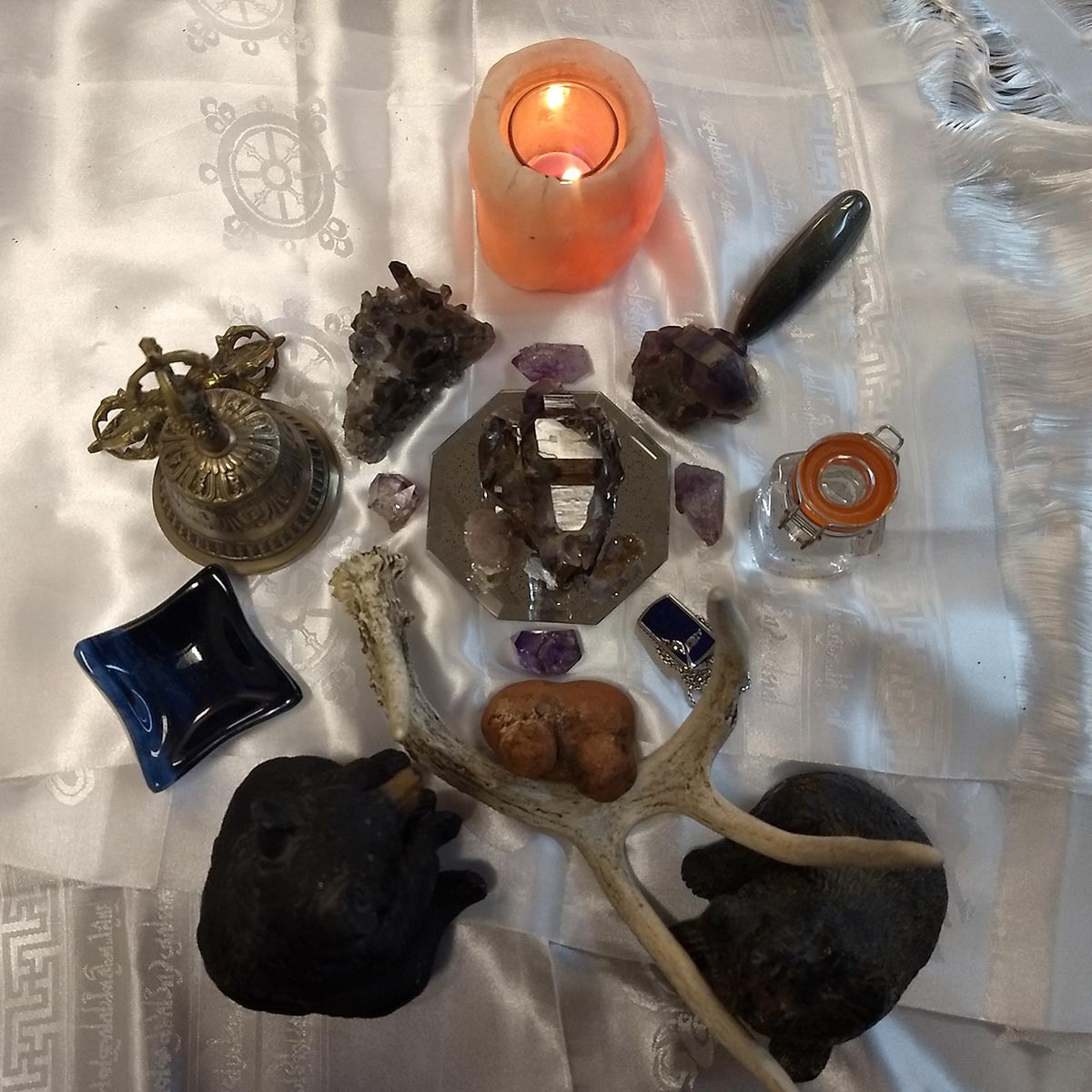Have you ever woken up from a vivid dream, with the sensations and emotions still lingering? Perhaps the dream was so vivid, so surreal, that you felt as if it was real? Dreams are a fascinating part of our existence. They transport us to different realities and allow us to experience scenarios we may not encounter in our waking lives. But what purpose do they serve? Why do we dream? And most importantly, what are they telling us?
Contents
“Dreams are the touchstones of our characters.”
~Henry David Thoreau
Exploring dreams is not a mere exercise in curiosity. It is a journey into the farthest reaches of the human mind, a quest for understanding that can yield profound insights. We can discover patterns in our subconscious, confront our deepest fears and desires, and even find answers to questions we didn’t know we were asking.
- Understanding the Mind: The act of dreaming is a window into the brain’s complex mechanisms. By exploring dreams, we can gain a deeper understanding of how our minds work.
- Unlocking Creativity: Dreams can serve as a wellspring of creativity, inspiring us in myriad ways. Artists, writers, and musicians have often cited dreams as a source of inspiration.
- Revealing the Subconscious: Dreams can reveal what is hiding in our subconscious. They can give us a glimpse of our deepest desires, fears, and unresolved issues.
As we delve into the world of dreams, it’s essential to approach with an open mind and a willingness to explore the unfamiliar. Are you ready to embark on this fascinating journey? Together, we will uncover the mysteries behind why we dream and what our dreams may be telling us.
The Mysterious World of Dreams
We’ve all experienced it – the sudden waking from a deep sleep, the remnants of a dream still swirling in our minds. It’s the world where the impossible becomes possible, where we can fly, meet long-lost relatives, or even breathe underwater. But what creates this mysterious world of dreams? Is it a random firing of neurons in our brains, or is there something deeper, more philosophical at play?
How Our Brain Dreams
Before we delve into the intricacies of dreams, it’s crucial to understand the different phases of the sleep cycle. The sleep cycle consists of several stages, each having its own distinct characteristics.
| Stage | Brain Wave Frequency | State of Consciousness | Dream Occurrence |
|---|---|---|---|
| Beta | High Frequency (13-30 Hz) | Alert, active, conscious thinking, and focus | Rarely |
| Alpha | Moderate Frequency (8-12 Hz) | Relaxed, calm, not thinking, and pre-sleep | Rarely |
| Theta | Low Frequency (4-7 Hz) | Deep relaxation, meditation, snippets of imagery (like daydreaming) | Sometimes |
| Delta | Very Low Frequency (0.5-3 Hz) | Deep, dreamless sleep | No |
| REM (Rapid Eye Movement) | Mixed Frequency | Active, vivid dreaming state | Yes, primarily |
Approximately 95% of people report having at least one dream per night
As you can see from the table, dreams primarily occur during the Rapid Eye Movement (REM) stage, where the brain activity is most similar to the waking state. This is where the most vivid and memorable dreams happen. In the other stages, Beta, Alpha, Theta, and Delta, dreams are rare, sometimes occurring, or do not occur at all, respectively. Interestingly, the Rapid Eye Movement (REM) stage is where our dreams take full flight. The brain’s activity in this stage mirrors that of when we’re awake, characterized by rapid, random movements of the eyes, hence its name. It’s in this REM stage that our most vivid dreams occur.
Why We Dream
But why do we dream? Is it simply a by-product of sleep, or does it serve a more profound purpose? Theories abound, some rooted in psychology, others in neuroscience. Sigmund Freud, the father of psychoanalysis, posited that dreams are a reflection of repressed longing – a playground for our unconscious desires. On the other hand, neuroscientists often view dreams as a form of overnight therapy – a time for our brains to process, categorize, and archive the day’s experiences.
“Dreams are the touchstones of our characters.”
~Henry David Thoreau
Decoding Our Dreams
So, what are our dreams telling us? Attempting to decode our dreams is akin to deciphering a coded message from our subconscious selves. One could see it as a form of self-psychoanalysis, a journey into the deepest recesses of our minds. Is the dream a reflection of our fears, our hopes, our past, or a prophecy of what’s to come?
Consider the context, the characters, the emotions felt during the dream, and its aftermath upon waking. There are no hard and fast rules to interpreting dreams; it’s a deeply personal and subjective process.
Are you ready to embark on the journey? As we navigate the mysterious world of dreams, we must keep an open heart and an open mind, for what we uncover may surprise, enlighten, or even shock us. But remember, in the end, it’s all a part of the grand adventure that is understanding ourselves.
The Science Behind Dreams
Have you ever wondered what happens in our brains when we dream? The exact mechanism of dreaming is still shrouded in mystery, a fascinating puzzle for neuroscientists and psychologists alike. But we’ve made significant strides in understanding the science behind dreams, and they’re as complex and wonderful as you might imagine.
According to the Activation-Synthesis Hypothesis, proposed by Harvard University psychiatrists J. Allan Hobson and Robert McCarley, dreams are essentially the result of our brain trying to interpret random electrical activity occurring during REM sleep. They suggest that the bizarre elements of dreams aren’t the brain’s attempt to send us coded messages, but rather its endeavor to make sense of these random signals.
However, this hypothesis doesn’t fully explain why we often dream about our personal experiences, fears, and desires. This is where the cognitive theory of dreaming comes into play. It proposes that dreams are a reflection of our waking thoughts and experiences. Simply put, dreams are a narrative our brain constructs from our memories, thoughts, and emotions.
Can you recall a time you’ve used a dream dictionary to interpret a dream? Dream symbolism is a subject of much debate, with some researchers advocating for universal symbols and others arguing for personal, subjective interpretations. It’s a complex and fascinating area to explore, one that underscores the rich tapestry of our inner lives.
A Glimpse into Carl Jung’s Theory of Archetypes and Dreams
As we delve deeper into the realm of dreams, it’s crucial to explore the work of renowned Swiss psychiatrist and psychoanalyst, Carl Gustav Jung. Known for his profound contributions to understanding the human psyche, Jung posited that our dreams are mirrors of our subconscious, reflecting archetypal images or themes that he believed are shared universally.
Archetypes, according to Jung, are innate, unconscious elements of our psyche that are shared among all human beings. They emerge in art, literature, religious texts and of course, our dreams. They can take various forms, such as the “mother”, “hero”, “trickster” or “wise old man” to name a few. These universal themes resonate with us because they tap into our “collective unconscious”.
“The collective unconscious,” Jung wrote, “contains the whole spiritual heritage of mankind’s evolution, born anew in the brain structure of every individual.”
What this means is that our dreams, rather than being merely random neural firings (as some theories suggest), might actually be telling us a story steeped in the collective wisdom and experience of our species. The symbols and narratives we encounter in our dreams are not just personal, but also communal. They represent shared human experiences and instincts.
Applying Jung’s Theory to Dream Interpretation
When it comes to interpreting our dreams, Jung’s approach provides a rich framework. Instead of using a one-size-fits-all dream dictionary, Jung’s approach encourages us to consider both the personal and universal dimensions of our dream symbols.
- First, we need to examine the personal associations we have with the dream symbols. These associations are unique to us, formed by our personal histories and experiences.
- Secondly, we must consider the archetypal significance of the dream symbols. This involves understanding the dream symbol in the context of universal human experiences and themes.
By considering both these dimensions, we can arrive at a more nuanced understanding of our dreams – one that recognizes our individuality, but also our shared human experience. So, next time you remember a dream, instead of reaching for a standard dream dictionary, try to decipher the personal and archetypal meanings. You might just uncover a richer tapestry of understanding about your subconscious mind.
The Function of Dreams
We must also consider why we dream. What purpose do these nightly narratives serve? Some theories suggest that dreams have a protective value. By simulating potential threats and rehearsing responses to them, dreams may serve to prepare us for real-life dangers. This is known as the threat simulation theory.
Others propose that dreams serve a crucial role in memory consolidation, the process of converting short-term memories into long-term ones. This theory, aptly named the memory consolidation theory, suggests that the content of our dreams may be influenced by the information we’ve encountered during the day.
Yet another theory, the emotional regulation theory, postulates that dreams help us manage our emotions. By processing unresolved emotions and conflicts in our dreams, we may wake up feeling more emotionally balanced and prepared to face the day.
The Different Types of Dreams and Their Meanings
Have you ever wondered about the different types of dreams we have and what they might be telling us? Allow me to take you on a journey into the realm of the subconscious, where dreams are woven and stories are told. Like the many genres of a good book, dreams too come in different types, each with its own unique message and meaning.
1. Lucid Dreams
Lucid dreams, as the name suggests, are dreams in which we’re aware that we’re dreaming. Quite a paradox, isn’t it? It’s like being the director and the actor in our own movie. But what do these dreams mean? In the liberating landscape of lucid dreams, we’re often able to confront our fears, solve problems, and explore our deepest desires. Thus, they could be seen as a tool for self-discovery and self-improvement.
2. Prophetic Dreams
Then there are prophetic dreams, the ones that seem to predict the future. Or do they? Is it mere coincidence or are these dreams genuinely prophetic? While science yet grapples with this question, it’s interesting to note that many people who’ve had such dreams believe in their predictive power. Could this be an indication of our intuitive capabilities, or is it just our mind playing tricks on us? It’s a mystery waiting to be unravelled.
3. Recurring Dreams
Ever had a dream that repeats itself? Yes, those are recurring dreams. Recurring dreams are often thought to reflect unresolved issues or unfulfilled goals in our lives. They may be nudging us to address something we’ve been avoiding or overlooking. So, these dreams could potentially be our subconscious’s way of communicating with us.
4. Nightmares
Let’s not forget about nightmares. They’re those terrifying dreams that jolt us awake in the middle of the night, heart pounding. Evidently, they’re not particularly pleasant. But could there be a purpose to these frightening nocturnal dramas? Nightmares might be an expression of our internal fears, anxieties, and conflicts. As such, they might serve as a wake-up call, urging us to confront and resolve our internal struggles.
Around 50% of dreams are thought to be negative in content
Each dream, each type, is a piece of the puzzle that is our subconscious mind. They serve as mirrors into our deepest thoughts, fears, desires, and conflicts, allowing us to better understand ourselves and navigate our lives.
It’s important also to distinguish nightmares from night terrors. The content of nightmares are recallable and can often be unforgetable, whereas night terrors are not recallable. This is because night terrors happen in the deepest part of our sleep, the Delta brain pattern. Nightmares occur in a typical dream state during the REM portion of our sleep cycle.
In our journey of understanding dreams, it’s important to remember that each dream and each individual is unique. What might hold true for one might not for another. But isn’t that the beauty of dreams? They’re as unique and complex as we are, reflecting our individual truths and experiences.
The Role of Dreaming in Our Mental Health
Have you ever wondered why we dream? As an integral part of our mental health, dreaming serves a purpose far beyond the mere act of sleeping. They are not just a nightly showing of our subconscious theatre, but rather, they play a significant role in our overall psychological well-being. So, let’s take a journey into the world of dreams and explore their profound impact on our mental health.
The Psychological Purpose of Dreams
Dreams, as we know, are a rich tapestry woven from the threads of our waking life. They help us confront our fears, realize our aspirations, and navigate our emotional landscapes. But, what is their psychological purpose?
Firstly, dreams facilitate emotional processing. Have you ever awoken from a dream that seemed to perfectly encapsulate a situation or feeling you were dealing with in your waking life? This is no mere coincidence. Our brains use dreaming as a safe space to process and understand our emotions, particularly those that we might suppress or overlook during our waking hours.
Secondly, dreams serve as a cognitive gymnasium, if you will. In the realms of our dreams, we can practice and refine our cognitive abilities without the constraints of reality. Think of a dream where you were solving a complex problem or navigating an intricate maze. These types of dreams help to sharpen our problem-solving and navigation skills.
Interpreting Our Dreams
What happens when we wake up and try to make sense of our dreams? Is there some hidden meaning behind the bizarre narratives we concoct in our sleep? While the specific interpretation of dreams is a highly personal endeavor, we can still identify some general themes.
Common symbols in dreams, such as water, animals, or certain colors, often carry universal connotations. For example, water might signify change, while animals might represent primal instincts or emotions. However, the true interpretation of these symbols is dependent upon our personal associations and experiences. Again, speaking to Carl Jung’s theory of the archetypes in the collective unconscious, it’s good to familiarize yourself with them to determine if your dreaming is reflective of matters going on in humanity at large.
Recurring dreams or nightmares, on the other hand, might indicate unresolved issues or deep-seated anxieties. If you’re frequently dreaming about failing an exam or being chased, it might be time to confront the source of these fears. By looking at the content of the dream symbolically, you may uncover your unconscious beliefs and fears portraying themselves through the people, objects, or environments indicated in your dreaming.
Personal or Impersonal
You may need to first determine whether the dream seems personal or impersonal. Meaning, are the symbols of the dream from your subjective experience of your life, or the objective experience of the world around you. This will help you determine whether you’re dreaming on an unconscious collective level of humanity, or a personal level of your own life and experiences, often during childhood. You may also examine what occurred the day before your dreaming to see what may have triggered the dream to help you understand its meaning.
On another note, I have a theory/belief that the collective unconscious is actually the dream of Mother Earth. Because we as a species are so intricately connected with each other and the planet, it stands to reason that this planet is itself a spiritual being that is dreaming our reality. If you’d like to understand this further, read “Who and What is Mother Earth?“
“Dreams are the mirrors of the soul. They reflect our deepest desires, fears, and hopes. By understanding our dreams, we can gain a better understanding of ourselves.”
Can Dreaming Help Us Solve Problems
The realms of our dreams often feel like a fantastical universe, detached from our waking life. But what if I told you that our dreams serve as problem-solving tools, helping us untangle the complexities of our day-to-day existence?
As an avid dreamer myself, I’ve come to appreciate the profound wisdom subtly woven into the fabric of our dreams. These nocturnal narratives are more than just arbitrary fragments of our imagination. They’re our brain’s way of helping us navigate through life’s labyrinth. In fact, many scientists believe that dreams are a crucial part of our cognitive toolkit, assisting us in problem-solving and emotional processing. But how exactly do they do this?
The Science Behind Problem-Solving Dreams
Our minds are truly remarkable, aren’t they? While we sleep, they’re busy sifting through the day’s experiences, looking for patterns and making connections that might have eluded us in our waking hours. This process is known as memory consolidation.
According to neuroscientists, during the Rapid Eye Movement (REM) phase of sleep, our brain connects unrelated ideas, helping us find solutions to problems that we might have been wrestling with during the day. It’s as if our mind is an artist, blending different shades of thoughts and experiences to paint a picture of understanding. Isn’t it fascinating to think that while we’re resting, our minds are working diligently to help us solve problems?
Dreams can aid in problem-solving and creativity.
Steps to Interpreting Our Dreams
The task then becomes to interpret these dreams, to decipher the messages they’re trying to convey. It can be challenging, as dreaming often speaks in a language of symbols and metaphors. Here are a few steps we can take to understand our dreams:
- Keep a dream journal: Write down your dreams as soon as you wake up. This can help you remember your dreams and find patterns. This is highly important to do immediately upon waking. Most people forget 95-99% of their dreams
- Reflect on the dream: Consider how dreaming made you feel. Emotions in dreams can often point to feelings we’re experiencing in our waking life.
- Analyze the symbols: Dreams are full of symbols. Try to understand what these symbols mean to you personally.
- Connect the dream to your waking life: Look for any connections between the dreaming and your current circumstances or problems.
If you’re intested in exploring the meaning of dreams further, read “Illuminating the Wild World of Dreams.”
Embracing Our Dreams
Unraveling the mysteries of our dreams can be a journey of self-discovery. By understanding our dreams, we can gain insights into our deepest fears, desires, and challenges. Our dreaming can serve as a mirror, reflecting our subconscious mind. In this light, dreams are not only fascinating but also deeply therapeutic. They can help us confront and resolve issues that we might have been subconsciously avoiding. So, let’s embrace our dreaming, for they’re the silent whispers of our inner selves, guiding us through the chaos of life.
If you’d like to explore your dream life with Coaching or Spiritual Couseling, contact me.











